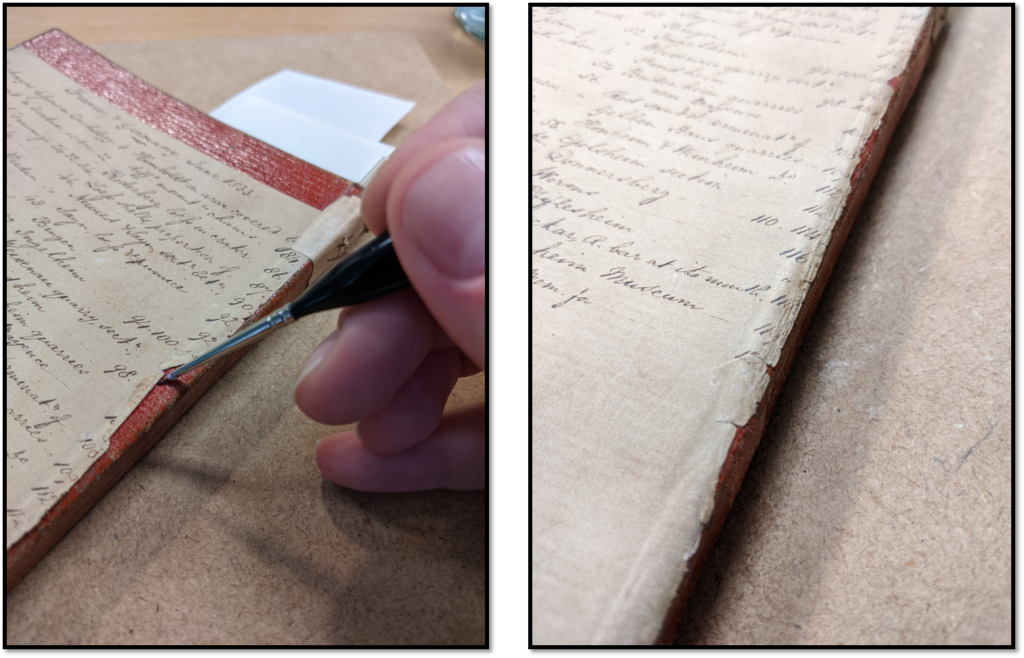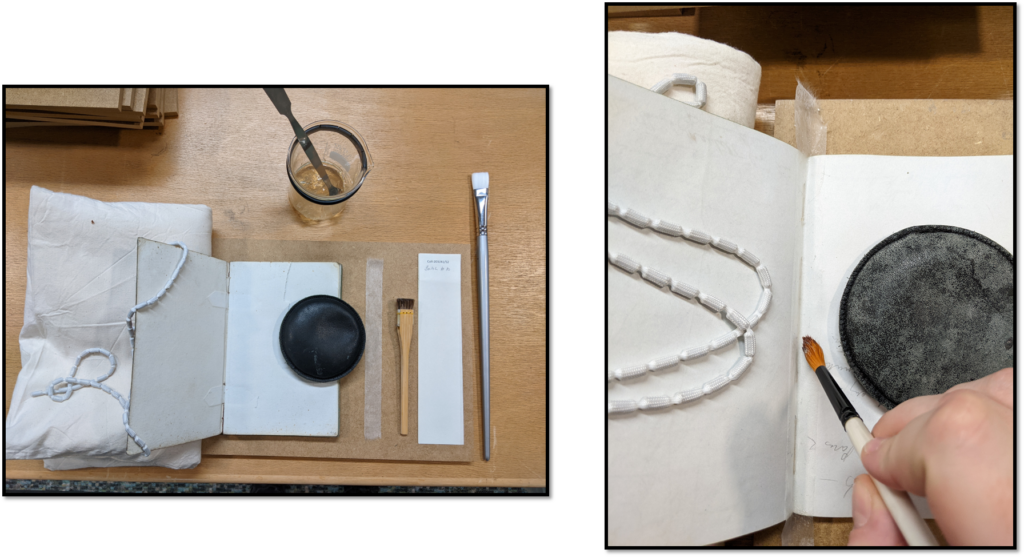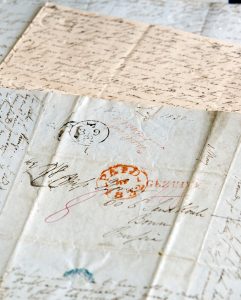A lot has happened in 2022! Supported by both core and external funding, and with a return to more normal ways of working, we have been able to re-start and complete many of our plans.
Conservation
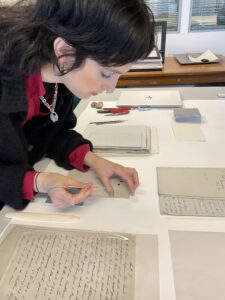
Sarah carefully treating minor folds
The care of the Lyell archives was our priority. Supported by external funding from the John R. Murray Charitable Trust, the National Manuscript Conservation Trust and others, professional Conservator Claire Hutchison worked on the collection from January – July 2022, along with two project interns, Joanne and Sarah M. We were able to slightly extend the conservation project, so a big thanks is due to Sarah P, who was able to clean Lyell’s Offprints and treat minor folds and tears found in his MS edits.
Digitisation
The University’s Cultural Heritage Digitisation Service have been making good headway, and we are 50% of the way there. At present, the digital images are hosted on the University’s image website Luna. You can use the left hand menu to select the Notebooks, select particular pages and zoom in on the detail – really helpful when deciphering Lyell’s handwriting. Mindful of any conservation needs, the team are able to also prioritise notebooks specially requested by researchers -so do get in touch – the team are very much bolstered by enthusiastic responses!
Charles Lyell’s World Online
Hosting the digital images online is one thing, but we also want to enhance digital access online. Funding provided by the International Association of Sedimentologists has enabled us to bring a Lyell Website Developer onboard. We know that Lyell’s Notebooks are packed with information; this information can jump around from topic to topic, but also builds, from observation to noting queries he needs answers to. The Web Team are currently working to apply the International Image Interoperability Framework (IIIF) that will allow the user to view the Notebooks, and flip seamlessly through the pages. Once this step is completed, we will explore what other functionality can be added to enhance the reader’s experience.
Cataloguing & transcription
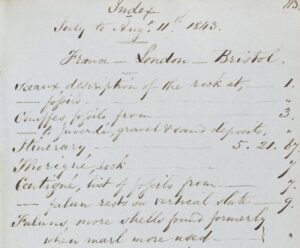
We are using the Notebook indexes to create a catalogue entry – they are often written by Mary, they can run to 6 or 7 pages – or missing entirely!
We have two cataloguing priorities – the Notebook indexes, and one set of Lyell’s correspondence. As we now have a large amount of Lyell’s handwriting digitised, we can start to share out the work to remotely transcribe the indexes using the AI platform Transkribus. The transcriptions are not completely accurate and need to be manually checked, so it’s time consuming, but the results produce rich descriptions that will enable good searching. A small group of remote online volunteers are working away on this (and doing a great job – thank you!). Please get in touch if you would like to join us!
We’ve also recruited on site volunteers, who are able to visit the CRC reading room, and view records that are not digitised. They are working away on one tranche of Lyell’s correspondence, identifying the senders and enhancing description. So far we’ve encountered some eminent correspondents, including Lucas Barrett and Samuel Beckles – yes, we are at the ‘B‘s!
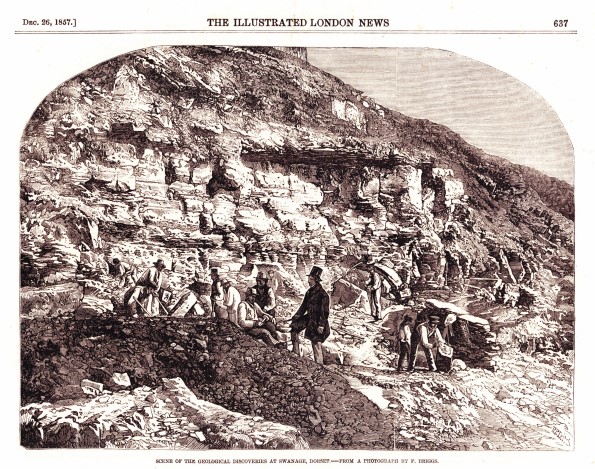
Beckles’ Pit at Durlston Bay, with Samuel Beckles wearing a top hat, directing operations. He is in touch with Lyell as soon as he starts finding specimens, Christmas 1856.
Looking ahead to 2023
As well as working on the website, plans are now in place for us to host what will be the first major exhibition on Lyell. This will be located in the Main Library Exhibition Gallery and will run from November 2023 to February 2024, so see you there! Lyell represents a huge topic – both in terms of scale and impact. The depth and breadth of the collection held at the University of Edinburgh offers a brilliant opportunity to show how he worked to develop and then promote his ideas. We’re also delighted to have secured funding to support a Lyell intern, who will focus on collating historical context and Lyell’s travels to populate both the exhibition and the website – more from them in 2023.
Thanks for all your support so far – enjoy the holidays when they come.
Pamela

